Author: YBB Capital Researcher Ac-Core / Source: Crazy Multichain Universe
Preface
The narrative direction of ETH has shifted from Layer1 to Layer2. If we still understand it as the narrative of "one-click issuance" of ERC-20, we might as well expand our imagination and envision a crazy era of "one-click chain issuance"! Leveraging the currently unparalleled ecosystem and high TVL, Arbitrum has been leading the war among Layer2, but can this temporary victory last long? Unlike the Arbitrum Orbit, which is a Layer3 solution, OP Stack is a "super chain" that can create Layer2 with one click. This article will comprehensively analyze the OP Stack architecture, ZK elements in OP, and the security issues of Rollup.
OP Stack Opens the "Super Chain Universe"
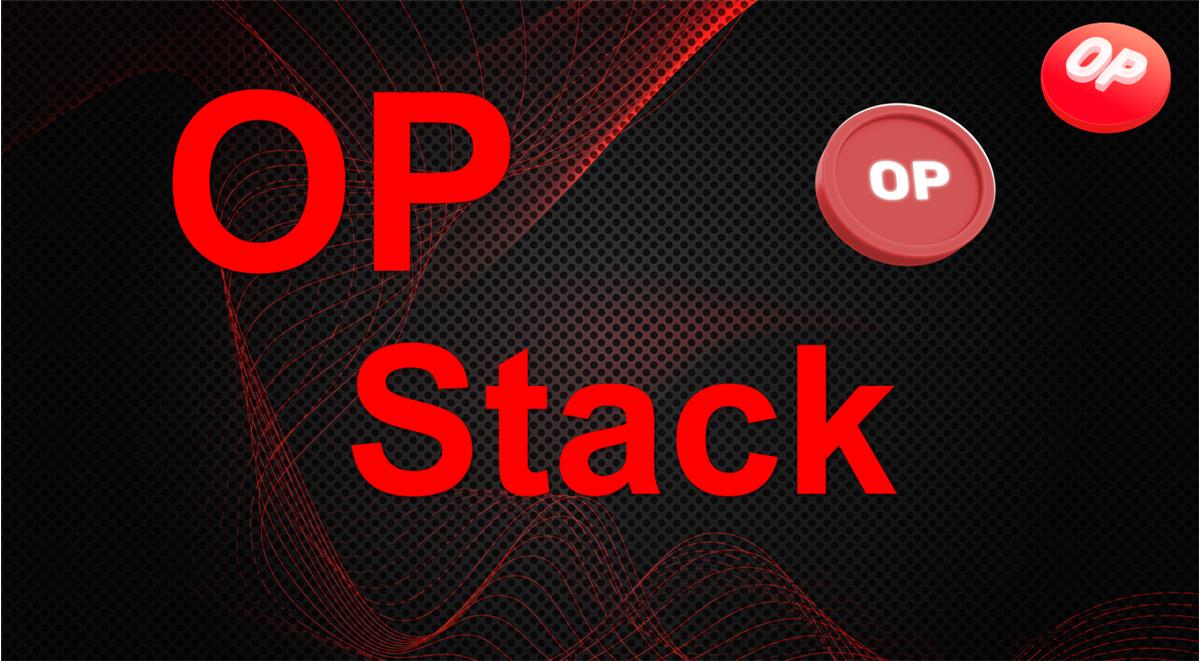
YBB Capital Researcher Ac-Core
Where will the narrative of the next bull market begin? From the high-performance Layer1, the towering Layer3, the ZK-based Layer2, or from the super chain of OP Stack? This is a very interesting and thought-provoking question. As long as Ethereum doesn't act recklessly, the title of "Ethereum killer" will still be the ultimate goal that cannot be surpassed by the public chains in the next bull market. Within this colossal giant, there are many super cores that cannot be ignored, one of which is: OP Stack.
What is OP Stack?
OP Stack can be understood as a set of open-source software components that allow anyone to build their own Layer2 blockchain on Ethereum using Optimistic rollups. It moves most of the computation and storage off-chain, while relying on Ethereum to ensure security and finality. From a technical perspective, Optimism mainly saves users a lot of on-chain fees. OP Stack consists of four main components:
Mainnet: OP Mainnet is a cheap and fast Ethereum Layer2 network that is compatible with the Ethereum Virtual Machine (EVM);
Contracts: Smart contracts that implement the core logic and functionality of OP Stack. OP contracts include the State Transition System (STS), Fraud Prover (FP), State Commitment Chain (SCC), and Canonical Transaction Chain (CTC);
Services: Providing data availability, data synchronization, and communication services between Layer1 and Layer2;
Tools: Facilitating the development, testing, deployment, monitoring, and debugging of blockchains based on OP Stack.
Super Openness:
OP Stack will be developed as a modular infrastructure for forking and integrating various Layer2 into a single "super chain" (Superchain). It integrates originally isolated Layer2 into a system with interoperability and composability, making it as simple to launch Layer2 as deploying smart contracts on Ethereum today, shifting the narrative from "one-click issuance" to "one-click chain issuance." Essentially, the super chain is a horizontally scalable blockchain network that shares Ethereum's security, communication layer, and development toolkit among different chains.
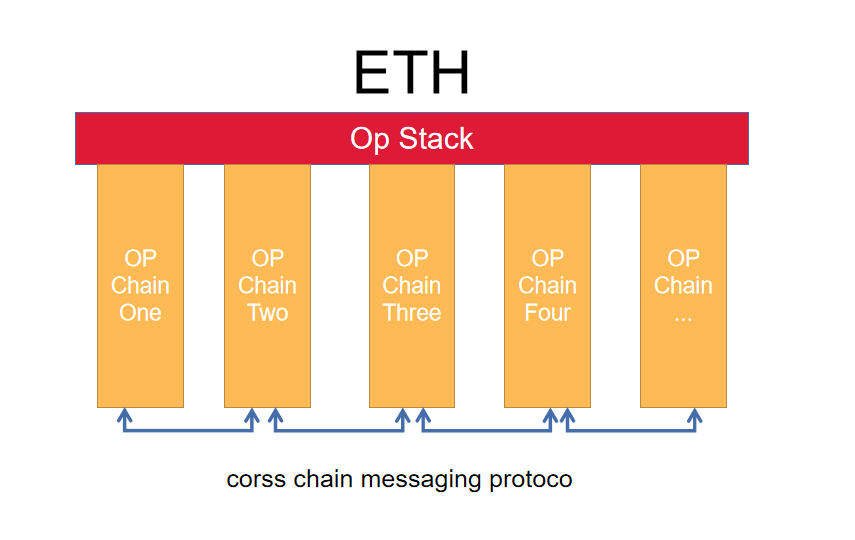
YBB Capital Researcher Ac-Core
OP Stack (Over Powered Stack) will become a unified modular development stack behind the super chain, and they are countless interlinked and communicable blockchains. The OP Stack stack is developed and maintained by the dedicated Optimism Collective and supports a shared open-source system for deploying new aggregation networks. At the same time, it is also a set of standardized open-source modules. Doesn't it sound like a Cosmos completely based on Ethereum security! Initially, it was agreed that ETH and ATOM complement each other, but now OP Stack has become the killer of Cosmos? Next, let's break down the definition of OP Stack:
A module is any data bit that a developer can insert into OP Stack. The "standardization" of this super chain means that there is consensus on the standard of a module, and it can be implemented by everyone. At the same time, being completely open-source means that it can be provided for free for any development iteration and message request. Developers have the ability to switch modules at different execution layers, consensus layers, settlement layers, and data availability layers of a chain.
Just as dYdX chose to leave Ethereum for the Cosmos application chain, the fundamental reason is that they hope to have a more modular consensus layer on their own chain. I think this is a good start, allowing more independent Dapps to choose a public chain that better suits their development. The most representative example is Luna, although it was destroyed for some reasons. Fortunately, OP Stack solves this problem. Its design allows for easier code forking, enabling developers to easily abstract different components of the blockchain and modify them by inserting different modules.
OP Stack Design Principles:
Efficiency: Build anything using OP Stack and issue blockchains with one click;
Simplicity: Utilize reusable code and existing development toolkits to enhance security and reduce maintenance complexity, overall lowering the threshold;
Scalability: Optimism Collective will fully open-source the main code of OP Stack.
Architecturally, OP Stack can be divided into six layers from bottom to top, namely, DA Layer data availability layer, Sequencing Layer, Derivation Layer, Execution Layer, Settlement Layer, and Governance Layer. Each layer of OP Stack is a modular API component that can be freely combined and decoupled. The most critical are the DA data availability layer, execution layer, and settlement layer, which together constitute the main workflow of OP Stack.
DA Data Availability Layer: It is the original data source of OP Stack, and can use one or more data availability modules to obtain input data. Currently, Ethereum is the main DA layer, but more chains will join in the future;
Execution Layer: The state structure in OP Stack, which can provide possibilities for EVM or other VMs, adding support for Layer2 transactions initiated on Ethereum, and adding additional Layer1 data fees for each transaction, the comprehensive cost of submitting transactions to Ethereum;
Settlement Layer: The destination of Layer2 transaction data on OP Stack, sending information to the target blockchain after confirmation on Layer2 for final settlement. In the future, it is also expected to integrate ZK and other validity proof mechanisms to bridge the gap between different chains, and even link the isolated islands between OP series Layer2 and ZK series Layer2.
OP Stack Rules:
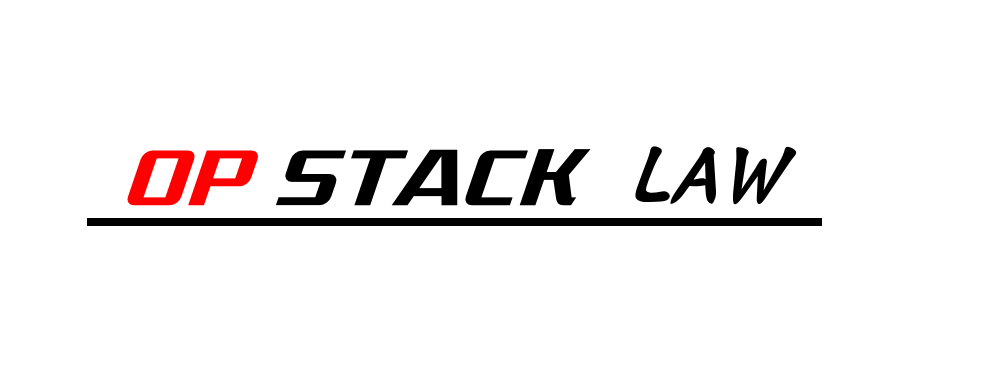
YBB Capital Researcher Ac-Core
Ethereum's infinite block space is a key step in achieving large-scale applications, but this expansion has also brought about fragmentation, and permissionless deployment has brought new challenges. Now, each new OP Stack chain is growing independently in its own domain, without a direct method for sharing standards and improvements. Users and builders also face huge challenges: evaluating numerous different chains individually based on security, quality, and neutrality. To achieve the super chain, OP Stack needs to transform from an independent, decentralized block space into a unified chain collective, dedicated to an open and decentralized block space. The "chain rules" provide guiding principles for optimistic governance and the super chain. Optimistic governance shifts from managing individual chains to managing shared standards for multiple chains, thereby defining the attributes required to be part of the super chain, while prioritizing the protection of user transactions on the super chain. Fundamentally, the "chain rules" are a social contract (rather than a legal contract), so active community discussions are crucial. Its existence will enable the super chain to ensure the following characteristics:
Ensure that the block space remains homogeneous, neutral, and open: The commitment to the chain rules is a commitment to protecting the users, developers, and other stakeholders of the chain. Regardless of the size of the chain, if it is part of the super chain, it can credibly prove the homogeneity, neutrality, and openness of its block space under optimistic governance;
Benefit from continuous improvement: Shared upgrades mean that the super chain can always access the best technology without having to worry about maintenance;
Provide better and more usable infrastructure: Because all chains in the super chain are credibly committed to a standard, they can work together to ensure the availability and affordability of key services such as indexing and sorting.
Thought-provoking Questions:
Can OP Stack Benefit OP?
What is the purpose of OP Token? If they adopt the Basechain approach, they will allocate a portion of the revenue back to the Optimism Collective. This "treasury" revenue will rely on its own "value" and create more narratives to ultimately impact the coin price, making the performance logic of OP in the secondary market similar to ATOM. This approach may be the most optimal at the moment. If more chains follow the Basechain approach for allocation, the Optimism Collective will ultimately benefit. Does this feeling remind us of UNI? Both projects have strong capabilities, but their tokens have no value other than voting and governance. However, Layer2 currently faces the issue of centralized sequencers, where the value of sequencing rights accumulates to the Rollup Token, even if Layer2 tokens are only used for some form of leader selection (rather than consensus voting).
At the same time, the OP team released the Law of Chain proposal on July 25th, launching a shared governance model and sequencer for all chains using OP Stack, aiming to standardize the "profit feedback" model to bring more benefits to the entire OP series (as mentioned in the OP Stack rules), which is akin to the shared security model of Cosmos.
Difference Between OP Stack and ZK Stack:
OP Stack: Multi-chain Single Choice
From the above, it is easy to see that OP Stack adopts a multi-chain model similar to Cosmos, but with only one choice. This is because OP Stack requires each chain to validate transactions from other chains. Otherwise, they would have to wait for days on Layer1 for results. Therefore, a single and shared sequencer, centralized MEV allocation, and protection under contract and management are the only ways for Optimistic rollups to achieve seamless interoperability between different chains.
ZK Stack: Multi-chain Multiple Choices
Unlike OP Stack, ZK Stack can also accommodate multiple chains, but it offers multiple choices. It can choose its own sequencer, handle MEV in its own way, and is protected by mathematics and code (note: OP Stack is protected by contract and management). This is because if ZK adopts a specified shared or very limited thread set, they can blindly trust each other based solely on mathematics, rendering zero-knowledge proofs worthless.
ZK Elements in OP Stack

YBB Capital Researcher Ac-Core
Because OP Stack is a completely open architecture, it allows for the emergence of zkvm, zkmips, zkwasm, and zkevm in the ecosystem. However, compared to "orthodox ZK," OP Stack only generates some different ZK elements. This leads us to involuntarily imagine that perhaps in the near future, there could be a dreamy collaboration between OP rollup and ZK rollup.
Implementing Zero-Knowledge Proofs (ZKP) for OP:
According to the latest developments, the team behind Mina plans to use their own plonk system + kzg commitment + folding algorithm nova to implement zkmips vm on OP Stack. Although this is only a recent proposal and may have many immature aspects, it is worth exploring. The mission of this project team is to achieve secure and low-latency cross-chain communication between Layer2, Layer1, and various chains in the OP series through zero-knowledge proofs (ZKP). This is a ZKP for a well-supported instruction set architecture (ISA) that can prove the behavior of Optimism fault-tolerant programs, laying the foundation for proving any blockchain system based on OP Stack.
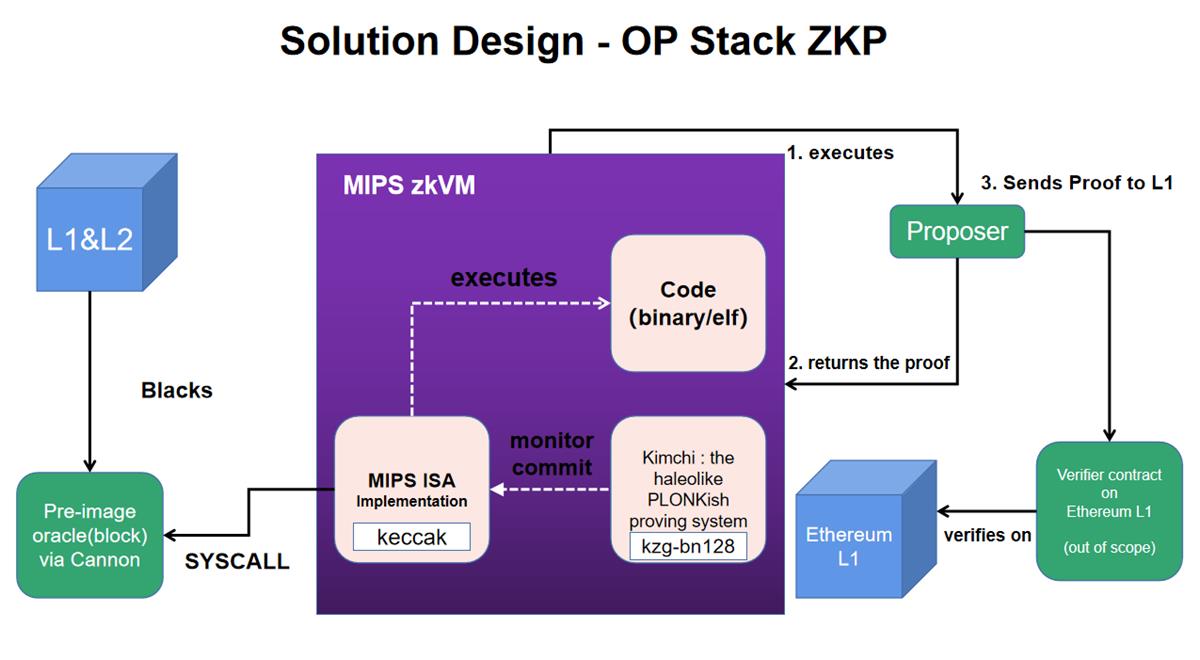
YBB Capital Researcher Ac-Core
Completing this task means implementing a zero-knowledge proof (ZKP) system that can use an instruction set architecture (ISA) supported by a golang compiler (such as MIPS, RISC-V, or WASM) to prove the behavior of OP fault-tolerant programs. In addition to proving the standard execution trace of the ISA, support for fault-tolerant programs introduces additional requirements.
Specifically, fault-tolerant programs introduce the concept of a Pre-image Oracle, which uses a special System call to load external data into the program. Each Fault Proof VM is responsible for implementing a mechanism through which the hash value of certain data is placed in a specific location in memory, and then the pre-image of that hash value is loaded into memory for program use. The Pre-image Oracle is also used to bootstrap the initial input of the program.
Attempt at Decentralized Sequencer:
Espresso Systems announced on July 21, 2023, that their proposal for building decentralized sequencer verification for OP Stack leadership elections has been accepted and they have become contributors to OP Stack and Superchain. The main protocol of this project, HotShot, is a high-speed consensus protocol that allows Ethereum validators to participate in the protocol through re-staking, aiming to achieve the same scale as the Ethereum validator set. The project has also developed Espresso Sequencer, which integrates with a fully functional ZK rollup, especially a branch of Polygon zkEVM.
What is Leadership Election?
Leadership election refers to the ability to use different leaders in a distributed system to create the next specified state transition. In blockchain, leadership election allows different block producers to generate blocks at different times. The leadership election algorithm can be competitive or non-competitive.
In the case of proof of work, a competitive leadership election algorithm means that many potential units are competing to become leaders at the same time. A non-competitive leadership election algorithm means that at a specific time, there is only one known leader. In the case of Ethereum's Gasper, a non-competitive leadership election algorithm means that at a specific time, there is only one known unit, and there is no other way for another potential unit to become a leader at that time.
When separating the proposer network and the builder network (i.e., the block builder network is only responsible for transaction ordering, and the proposer network is only responsible for signing blocks), the single entity originally responsible for producing blocks at a specific time is transformed into many potential entities, allowing them to competitively build the most profitable potential blocks in the builder network at that time. Meanwhile, due to the existence of MEV, this competitiveness returns.
Understanding the various second-order effects of leadership election mechanisms between different OP Stack chains is very difficult. Currently, using leadership election as a mechanism is the most popular, as it allows for more decentralized sequencing. It should be noted that this approach also cannot guarantee absolute decentralization of the sequencer, so extra caution is required when considering the issue of decentralized sequencers.
Are Rollups Really Secure?
How Ethereum Works:
The principle of Ethereum is that each node stores and executes every transaction submitted by users. This high-level security approach also makes the entire network very expensive, so the Rollup solution was adopted to scale the entire network. In simple terms, Rollup = a set of contracts on Layer1 + its own network nodes on Layer2, i.e., on-chain smart contracts + off-chain aggregator, relying on Ethereum for settlement, consensus, and data availability, and only responsible for executing Rollup.
The on-chain smart contract represents its trust model, which is an Ethereum smart contract, leveraging the security of Ethereum;
- The off-chain aggregator executes and aggregates transactions off-chain, compresses large batches of transactions, and ultimately puts them on the Ethereum mainnet, achieving faster and cheaper transactions.
The Layer2 network nodes have many components, with the sequencer being the most important. It is responsible for receiving transaction requests on Layer2, determining their execution order, and packaging transaction sequences into batches (Batch), which are then sent to the Rollup project's contract on Layer1. It is important to note that, as shown in the reference image below, all Layer2 Rollup sequencers on Ethereum are currently centralized.

Image Source: Official Tweet Screenshot
Centralized Sequencer Issue:
Full nodes of Layer2 can obtain transaction sequences in two ways: directly from the sequencer or by reading the transaction batches sent to Layer1 by the sequencer. The latter has stronger immutability. Since transaction execution changes the state of the blockchain ledger, to ensure consistency, Layer2 full nodes not only need to obtain transaction order but also synchronize ledger states with the sequencer. Therefore, the task of the sequencer is not only to send transaction batches to the Rollup contract on Layer1 but also to transmit the updated results of transaction execution, StateRoot/StateDiff, to Layer1. In simple terms, the sequencer's job is to process and order transactions to be added to the blockchain, responsible for batch processing transactions and publishing them to the Layer1 smart contract.
For Layer2 full nodes, as long as they obtain the transaction sequence on Rollup on Layer1 and the initial StateRoot, they can reconstruct the blockchain ledger of Layer2 and calculate the latest StateRoot. Conversely, if the StateRoot calculated by Layer2 full nodes themselves is inconsistent with the StateRoot published to Layer1 by the sequencer, it means the sequencer is engaged in fraudulent behavior. Therefore, compared to Layer2's own network, Layer1 is more decentralized, trustless, and secure.
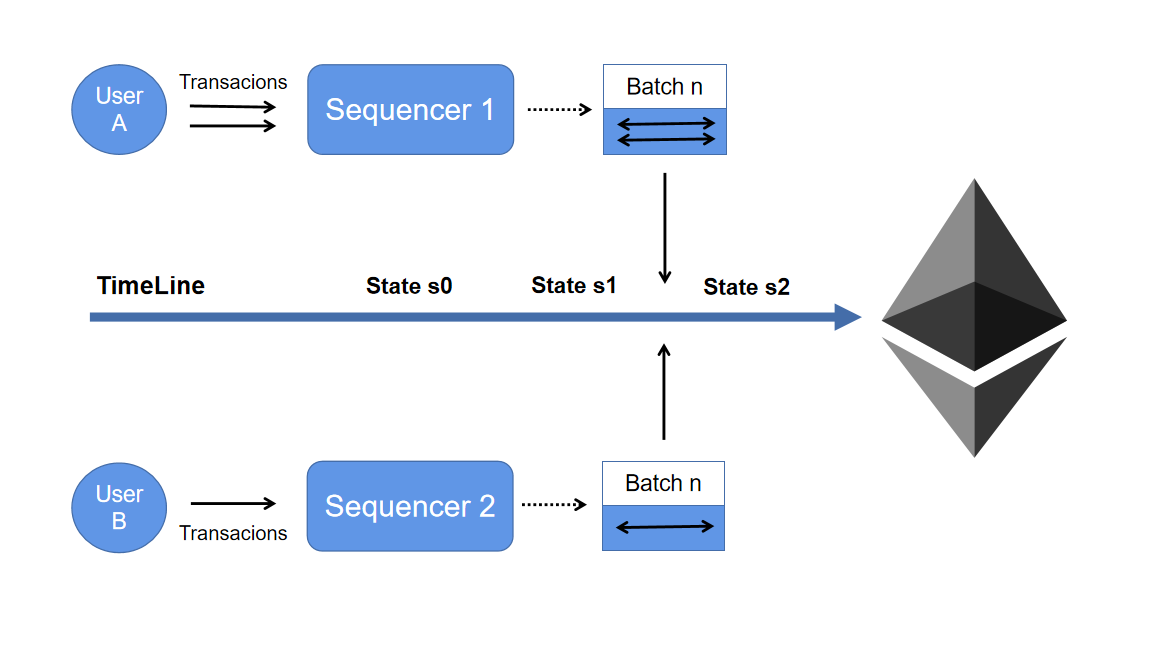
OP Stack:
The question arises: Can Layer2 forge non-existent or incorrect transactions, such as transferring Layer2 token assets to the operator's address of the sequencer and then transferring these token assets to Layer1 to steal user assets? The answer is: it is entirely possible to do so. Therefore, different types of Rollup have adopted different measures to address the potential fraudulent risks associated with the sequencer.
Taking Optimistic Rollup as an example, it allows Layer2 full nodes to provide Fraud Proofs, proving that the data published by the sequencer on Layer1 is incorrect. However, for Optimism without Fraud Proofs, if it really wants to steal user assets from Layer2 through the sequencer, it only needs the sequencer operator to forge transaction instructions and transfer other people's assets on Layer2 to their own address. Finally, they can use the Bridge contract built into Rollup to transfer the stolen coins to Layer1.
To address this potential problem, the current solutions rely on community members, social media, and other public opinion supervision to achieve a so-called "consensus," or rely on OP as the official endorsement. Therefore, in theory, the security of OP Rollup depends on having an honest Layer2 full node that can provide a Fraud Proof, as mentioned in the "Difference Between OP Stack and ZK Stack" section.
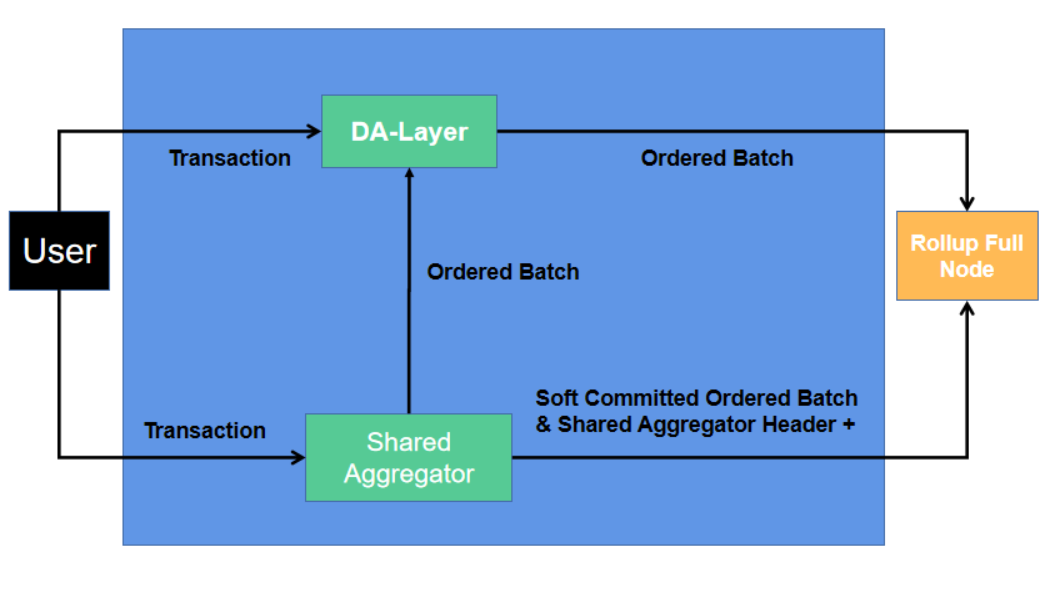
ZK Stack:
Now let's discuss ZK Stack. In the ZK rollup network, there are Prover nodes that are specifically responsible for publishing transaction batches to the sequencer and generating validity proofs. These validity proofs have dedicated verification contracts on Layer1. As long as the transaction batch and its corresponding StateRoot/StateDiff proof pass the verification of the Verifier contract on Layer1, the transaction is finally confirmed. Unlike OP Stack, ZK rollup, in addressing the sequencer fraud issue, relies not only on Layer2 full nodes but also on Validity Proofs. From a security perspective, this is obviously much more reliable than Optimism, as mentioned in the "Difference Between OP Stack and ZK Stack" section.
In theory, the security of ZK rollup is guaranteed by the Verifier contract on Layer1, or it can be said to be ensured by Layer1 nodes for final transaction confirmation. In contrast to the security of OP rollup, which relies on at least one honest Layer2 full node that can provide a Fraud Proof, both inherit the security of Layer1 (ETH). However, in strict terms, this may not be the case, but it is currently the best solution. Compared to other public chains, Ethereum's security is undoubtedly the most reliable.
Similar to the blockchain trilemma, the comprehensive user experience of a "product" seems to also have a trilemma: security, simplicity, and efficiency. Compared to OP Stack, ZK Stack relies more on mathematics and code to enhance overall security, thus significantly increasing overall complexity. Therefore, there are several perennial topics regarding ZK:

Delay Issue: ZK rollup also needs to address the delay issue of Layer2 nodes publishing data to Layer1. Similar to preparing a package for shipping, there is a fixed cost every time the sequencer or Prover sends data to Layer1.
Speed Issue: ZK rollup faces a challenge in that the speed of generating validity proofs is slow. Although the sequencer can execute thousands of transactions in 1 second, generating validity proofs for these transactions may take several hours.
Cost Issue: To reduce overall costs, many ZK rollup solutions adopt the strategy of "aggregating multiple proofs and sending them to Layer1 at once." This means that the Prover does not immediately send a proof to Layer1 after generating it but waits for multiple proofs to be generated and then aggregates them before sending them to the Verifier contract on Layer1.
Quantity Issue: If the number of initiated transactions is not large enough, the sequencer may delay publishing data to Layer1. For example, during periods of low market activity, some Rollup networks may only send transaction batches to Layer1 every half hour.
Regarding the issue of a more suitable decentralized sequencer solution, modularity may be the optimal solution because modularity is equivalent to greater customizability. Currently, the main decentralized tools include the following five:
- Single Sequencer & POA
- Based rollup
- DVT x Sequencer
- Shared Sequencer
- Bootstrap a New Sequencer Set
We believe that in the near future, many of the above issues can be further addressed through technology. For example, reducing the time to generate validity proofs. Optimism has promised to release a Fraud Proof system soon, and Ethereum's Danksharding solution will significantly reduce the data cost of Rollup. The challenge of decentralized sequencers will also be overcome, providing effective solutions to the above issues.
Conclusion: Narrative Trend
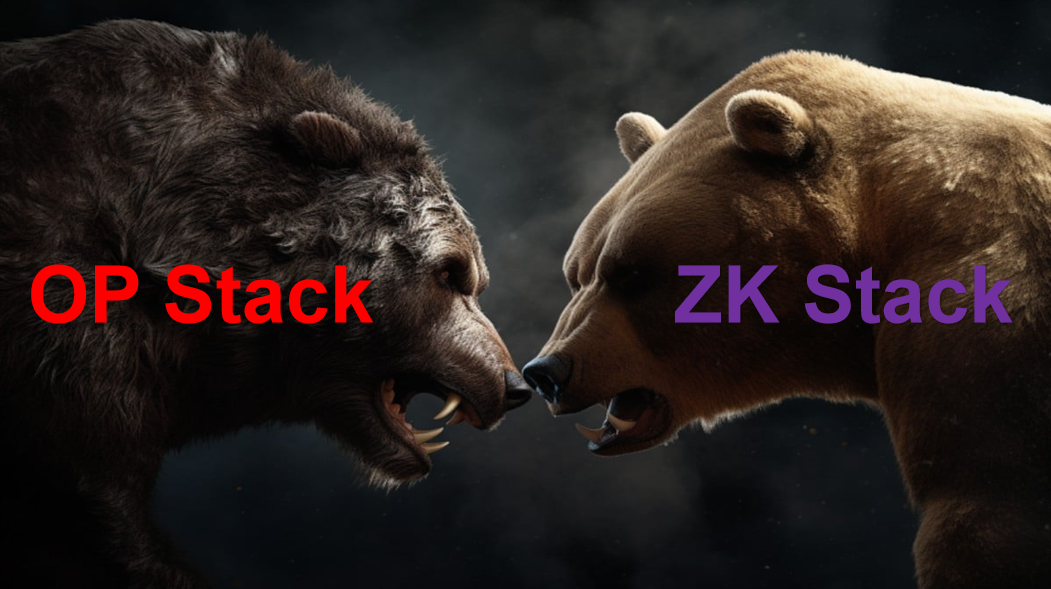
Superchains and super extensions have always been the focus of expansion. Although at present, various projects are still in the early stages of development, they have brought more powerful narrative to Ethereum. We can now see that OP Stack has gained more adoption, with many prominent public chains joining, such as Coinbase, opBNB, Zora, Worldcoin, and many others, giving OP Stack strong brand endorsement. For example, on the evening of June 26, zkSync announced the launch of ZK Stack, a modular open-source framework for building custom ZK rollups, which many people believe is zkSync's ace in the hole to compete with OP Stack. On one hand, there is OP Stack with the advantage of being the first mover, and on the other hand, there is ZK Stack with the advantage of mathematics. In conclusion, any value of Layer2 can be accumulated into the Rollup token. The battle for Layer2 expansion has just begun. How do you view this smokeless war of Layer2?
免责声明:本文章仅代表作者个人观点,不代表本平台的立场和观点。本文章仅供信息分享,不构成对任何人的任何投资建议。用户与作者之间的任何争议,与本平台无关。如网页中刊载的文章或图片涉及侵权,请提供相关的权利证明和身份证明发送邮件到support@aicoin.com,本平台相关工作人员将会进行核查。




